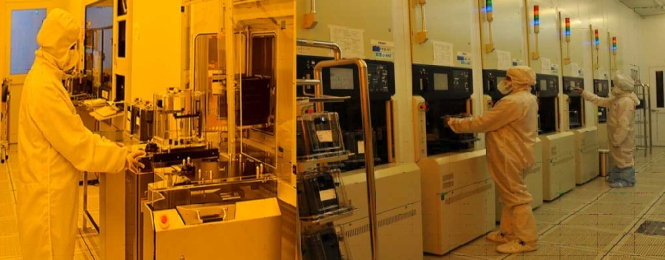Indx-techs
FULL MEMBER

- Joined
- Dec 3, 2016
- Messages
- 493
- Reaction score
- -4
- Country
- Location
ISRO for 100 per cent indigenous rocket technology soon, says chief
So far, SCL in Chandigarh has come out with about 75 products like converter, processor and voltage regulator.
 ISRO successfully tested NAVIC receiver by using it for navigating the PSLV-C36 rocket.
ISRO successfully tested NAVIC receiver by using it for navigating the PSLV-C36 rocket.
So far, SCL in Chandigarh has come out with about 75 products like converter, processor and voltage regulator.

Chennai: With the successful testing the indigenously developed Vikram processor, NAVIC receiver and lithium battery in the PSLV-C36 mission as ISRO is moving towards having 100% indigenous technology in building and launching the rockets.
“Our target is to have 100% indigenous technology in our rockets and we are moving towards that. Every single device that we are taking from outside now, we are looking to develop it indigenously,” said ISRO chairman A.S. Kiran Kumar told Deccan Chronicle.
“Our Vikram processor which has been realised at our semiconductor’s laboratory in Chandigarh has flown as a piggyback experiment. It has produced excellent results,” he said.
Earlier, the processor used to procured from outside. Now, the processor is fully realised in Semi-Conductor Laboratory (SCL) at Chandigarh. “The design and fabrication of the processor were also done by Isro. So, this is an excellent development,” he said
So far, SCL in Chandigarh has come out with about 75 products like converter, processor and voltage regulator. “We will continue to increase the number of devices that are brought out from SCL as more and more can be used in the electronics hardware. It is a step towards self-reliance,” he said, adding that some of the capability will be augmented in the launch vehicle.
GSLV Mk-III rocket’s tentative launch date is Jan. 20ISRO successfully tested NAVIC receiver by using it for navigating the PSLV-C36 rocket. On being asked whether the NAVIC system is ready for the commercial use he said, “Basic data required for any entrepreneur to build the system is there in the public domain. Some companies are already started making things from available hardware.”
ISRO has fixed tentative launch date for next generation GSLV-Mk-III rocket as January 20.
“We are planning to have the launch on January 20. Since it’s a new mission the launch date may change according to the new observations. Nevertheless, we are aiming for the January launch,” said K. Sivan, director, Vikram Sarabhai Space Centre, Thiruvananthapuram.


